Elevate your preparation for the 2025 Adult Health Exam #3 with this expertly curated study resource, Adult Health Exam #3 with 150 Questions: Essential Questions, Expert-Verified Answers, and In-Depth Rationales for Guaranteed Success. Tailored for nursing students and healthcare professionals, this comprehensive guide features 150 essential questions that target high-yield topics such as cardiovascular disorders, respiratory conditions, endocrine imbalances, neurological assessments, and infectious diseases. Each question is accompanied by expert-verified answers and in-depth rationales, providing a thorough understanding of clinical concepts and decision-making processes critical for patient care. Aligned with the latest 2025 exam standards, this resource supports preparation for ATI, NCLEX, and other nursing assessments by emphasizing evidence-based practice and the NCSBN Clinical Judgment Measurement Model. Designed to enhance critical thinking, the guide includes scenario-based questions that simulate real-world clinical challenges, ensuring you’re ready to tackle complex cases with confidence. Whether you’re aiming for exam success or seeking to strengthen your adult health nursing knowledge, this guide offers a structured, reliable path to guaranteed success in 2025.
Preview
1. A client recently diagnosed with Ménière’s disease is struggling with tinnitus. How
does the nurse provide support to this client?
A. Provide further assessment.
B. Suggest a quiet environment.
C. Suggest temporary removal of a hearing aid.
D. Refer the client to the American Tinnitus Association. (Correct Answer: D)
Rationale: The American Tinnitus Association provides resources and support for
individuals struggling with tinnitus. While a quiet environment may help some clients,
professional support and guidance from an organization specializing in tinnitus
management can be more effective.
2. An older adult client reports ear pain. To differentiate the cause, which clinical
manifestation is more indicative of otitis media?
A. Dry, flaky cerumen
B. Pain on movement of the tragus
C. Ringing in the ears
D. Vertigo (Correct Answer: D)
Rationale: Vertigo is a key symptom of otitis media, as inflammation in the middle ear can
affect balance and equilibrium. Pain on tragus movement is more indicative of otitis
externa, and dry cerumen does not suggest an infection.
3. An older adult client reports nausea during removal of impacted cerumen from the
ear canal. What does the nurse do next?
A. Administer an antiemetic.
B. Call the health care provider.
C. Stop irrigation immediately. (Correct Answer: C)
D. Use less water to irrigate.
Rationale: The vagus nerve (cranial nerve X) can be stimulated during ear irrigation,
causing nausea and even syncope. Stopping the procedure immediately prevents further
adverse effects.
4. Which type of drug therapy does the nurse anticipate giving to a client with
Ménière’s disease to decrease endolymph volume?
A. Antihistamines
B. Antipyretics
C. Diuretics (Correct Answer: C)
D. Nicotinic acid
Rationale: Diuretics, such as hydrochlorothiazide, are often prescribed to reduce fluid
buildup in the inner ear, thereby decreasing vertigo episodes associated with Ménière’s
disease.
does the nurse provide support to this client?
A. Provide further assessment.
B. Suggest a quiet environment.
C. Suggest temporary removal of a hearing aid.
D. Refer the client to the American Tinnitus Association. (Correct Answer: D)
Rationale: The American Tinnitus Association provides resources and support for
individuals struggling with tinnitus. While a quiet environment may help some clients,
professional support and guidance from an organization specializing in tinnitus
management can be more effective.
2. An older adult client reports ear pain. To differentiate the cause, which clinical
manifestation is more indicative of otitis media?
A. Dry, flaky cerumen
B. Pain on movement of the tragus
C. Ringing in the ears
D. Vertigo (Correct Answer: D)
Rationale: Vertigo is a key symptom of otitis media, as inflammation in the middle ear can
affect balance and equilibrium. Pain on tragus movement is more indicative of otitis
externa, and dry cerumen does not suggest an infection.
3. An older adult client reports nausea during removal of impacted cerumen from the
ear canal. What does the nurse do next?
A. Administer an antiemetic.
B. Call the health care provider.
C. Stop irrigation immediately. (Correct Answer: C)
D. Use less water to irrigate.
Rationale: The vagus nerve (cranial nerve X) can be stimulated during ear irrigation,
causing nausea and even syncope. Stopping the procedure immediately prevents further
adverse effects.
4. Which type of drug therapy does the nurse anticipate giving to a client with
Ménière’s disease to decrease endolymph volume?
A. Antihistamines
B. Antipyretics
C. Diuretics (Correct Answer: C)
D. Nicotinic acid
Rationale: Diuretics, such as hydrochlorothiazide, are often prescribed to reduce fluid
buildup in the inner ear, thereby decreasing vertigo episodes associated with Ménière’s
disease.




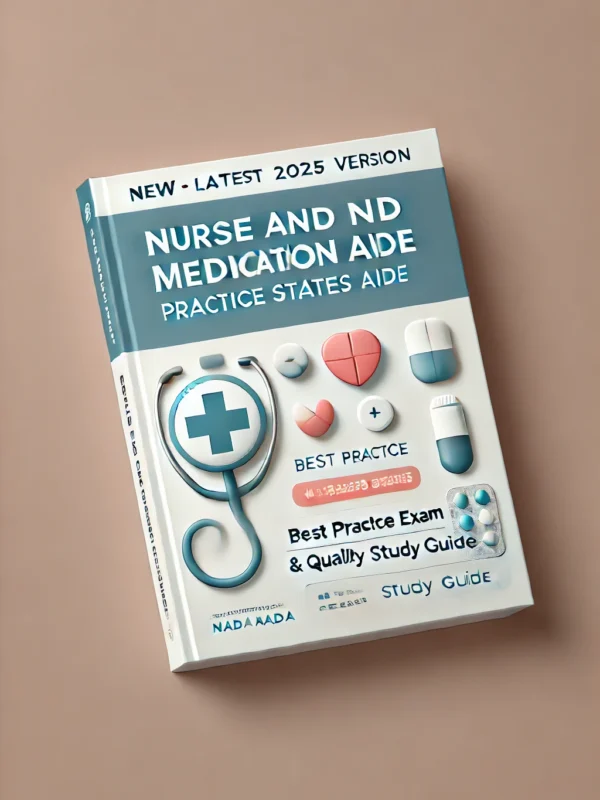

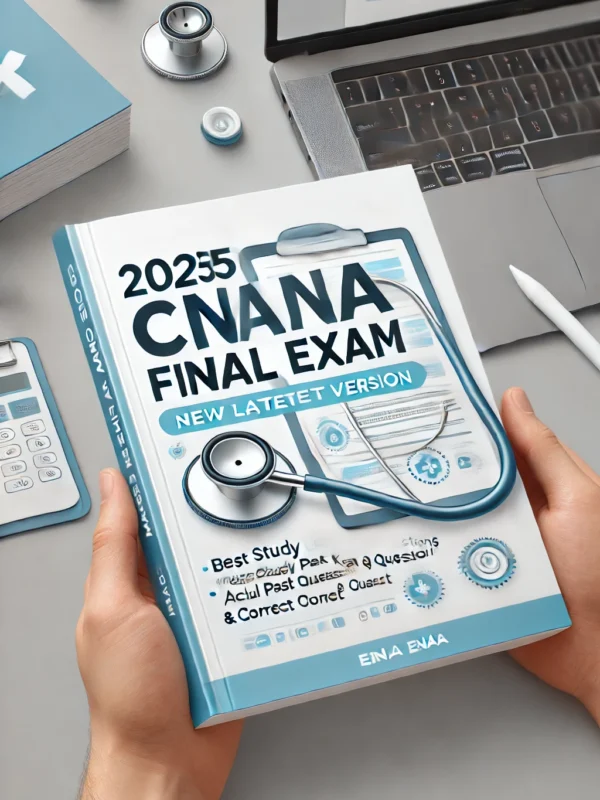
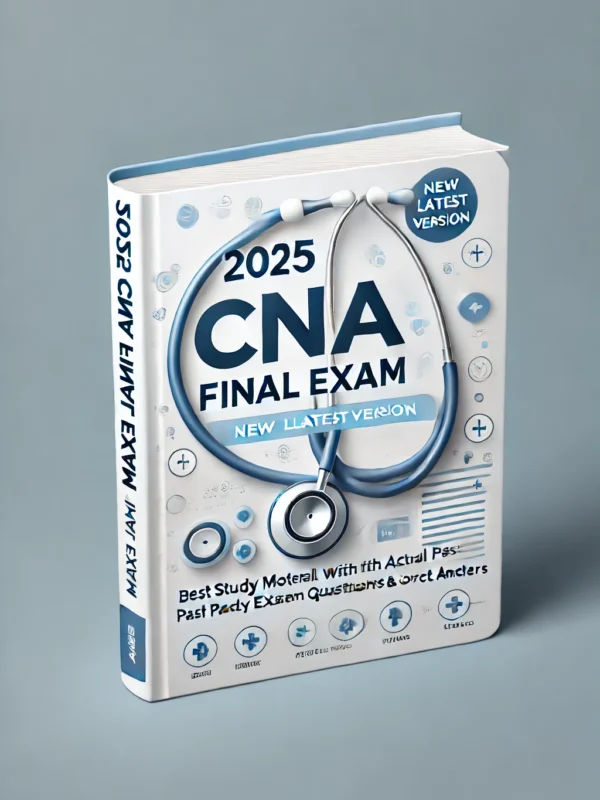

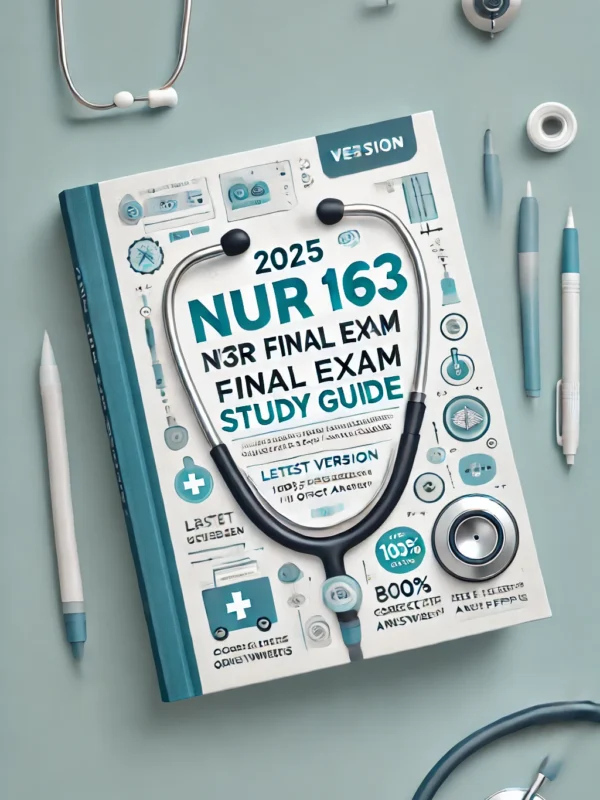
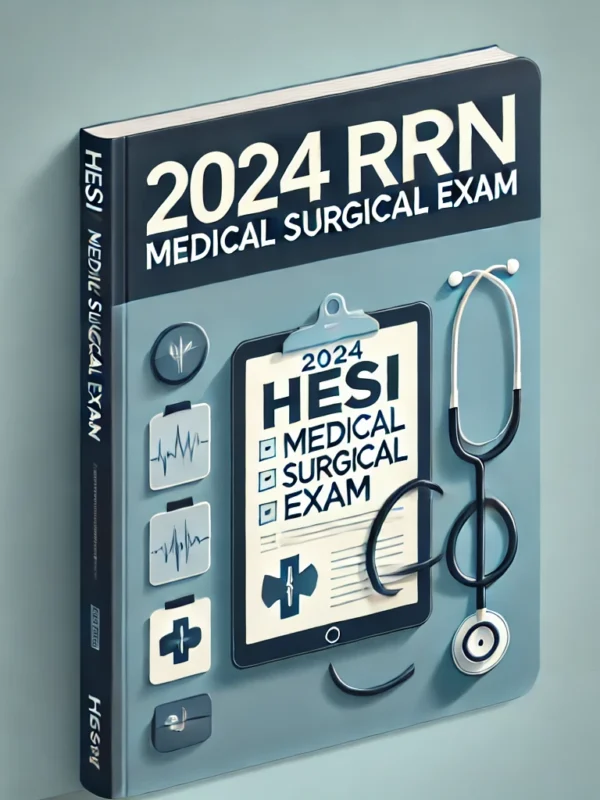
Reviews
There are no reviews yet.